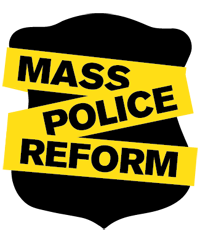1995 Beating by Boston Police Highlights Dangers for Black Undercover Officers

By Wil Haygood
Washington Post Staff Writer
Tuesday, July 21, 2009
BOSTON — This old city has long been bewitched and enlivened by the racial dynamics of black and white. Sweet uplift traveling alongside bitter tonic. The warring sagas have often seared right into the consciousness of America itself.
In 1863 the 54th Massachusetts Regiment was formed consisting of freedmen and former slaves who distinguished themselves during the Civil War. That seemed to set a progressive story line. In 1966 Edward Brooke was elected a U.S senator from here, becoming the first black elected to that body since Reconstruction. In 2006 Deval Patrick was elected the state’s first black governor. Bostonians — this capital city being the political nerve center of the state — took particular pride in such advancements.
But there have been racial setbacks that have roiled the black populace here.
In 1974 a desegregation plan unleashed havoc as hundreds of whites morphed into angry mobs. In 1988 inmate Willie Horton became a symbolic talisman in the presidential campaign of Gov. Michael Dukakis: Horton, a convicted murderer, had been released under a weekend furlough program backed by Dukakis and eventually committed armed robbery and rape. Some saw the GOP ads featuring Horton as racial flame-throwing: Horton was black.
Two years later, in 1989, Charles Stuart said his pregnant wife had been shot by a “black man” who rushed up to his car. Boston police began stopping young black men, hungry for an arrest. There was no black man; Stuart later jumped from a bridge and died. His brother had implicated him in the murder.
And this is what happened on a January night in 1995. A young black man had been gunned down in an eatery. A neighborhood resident dialed 911 claiming an officer had been shot: He later said it was the quickest way to get help in an inner city establishment. Four black suspects were being pursued across a 10-mile area. On a dead-end street, police believed they had cornered one of the suspects. They pummeled him before he uttered a word, using a baton, fists, and boot-laden feet. The “suspect” spurted blood, dropped to the cold ground, tried to get up, only to be beaten more. His gurgling words were unintelligible through blood and pain.
The “suspect” was actually Michael Cox, a decorated undercover police officer who had himself been in pursuit of the suspects, had even been in the lead chase vehicle. And who happened to be black.
At least two and possibly three officers participated in Cox’s beating. More than two dozen officers would eventually arrive at the scene, some who held supervisory positions. But in the follow-up investigation, no officer took responsibility for the beating. Cox survived.
“The Boston police department chewed up one of its own and spit him out,” says Dick Lehr, author of the recently published “The Fence: A Police Cover-Up Along Boston’s Racial Divide.” Lehr spent four years unraveling the saga which exposed anew the concern of black police officers working undercover. In New York City seven weeks ago, Omar Edwards, an off-duty black officer, was shot dead by a white officer who mistook him for a criminal suspect.
The Cox case would draw comparisons to the infamous 1991 Los Angeles Rodney King case, in which King — who wasn’t a police officer — had been beaten by police officers, a scene caught on videotape. “It never became as sensational as the Rodney King beating because there was no videotape,” says Rob Sinsheimer, one of Cox’s trial lawyers. “But if you look at the beating, stroke for stroke, it could have actually been worse than the King beating.”
FULL STORY HERE:
http://www.washingtonpost.com/wp-dyn/content/article/2009/07/20/AR2009072003216.html
